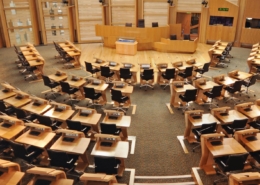QUESTIONS are being raised about the effectiveness of Glasgow’s low emission zone (LEZ), less than two months before the anti-pollution scheme comes into force in Aberdeen.
The controversial LEZ was introduced in Scotland’s largest city 10 months ago, which banned thousands of cars that weren’t compliant from the city centre in order to cut emissions from vehicles.
But fresh data obtained from the Scottish Mail on Sunday shows that nitrogen dioxide (NO2) measured at one monitoring station in the city increased in the first quarter of this year compared with last.
The average level of NO2 at Glasgow’s Hope Street was 44.2 micrograms per cubic metre in the first three months of 2024, up from 42.5 micrograms from the same period last year.
Levels of ozone, an irritant of the lungs which can trigger asthma, have also risen at Townhead, within the zone.
Luke Bodset, a spokesman for AA, has urged Aberdeen to “step back and considered what has happened in Glasgow” ahead of the LEZ being introduced.
“A big question is how much the air quality across the LEZ and wider city could have been improved by spending the millions of pounds these have cost on better park and ride, and park and cycle, facilities on the outskirts,” he added.
Areas in Glasgow on the boundaries of the LEZ are also being adversely impacted.
Locals from Sighthill Circus voiced their fury at people parking non-LEZ compliant vehicles on their streets.









